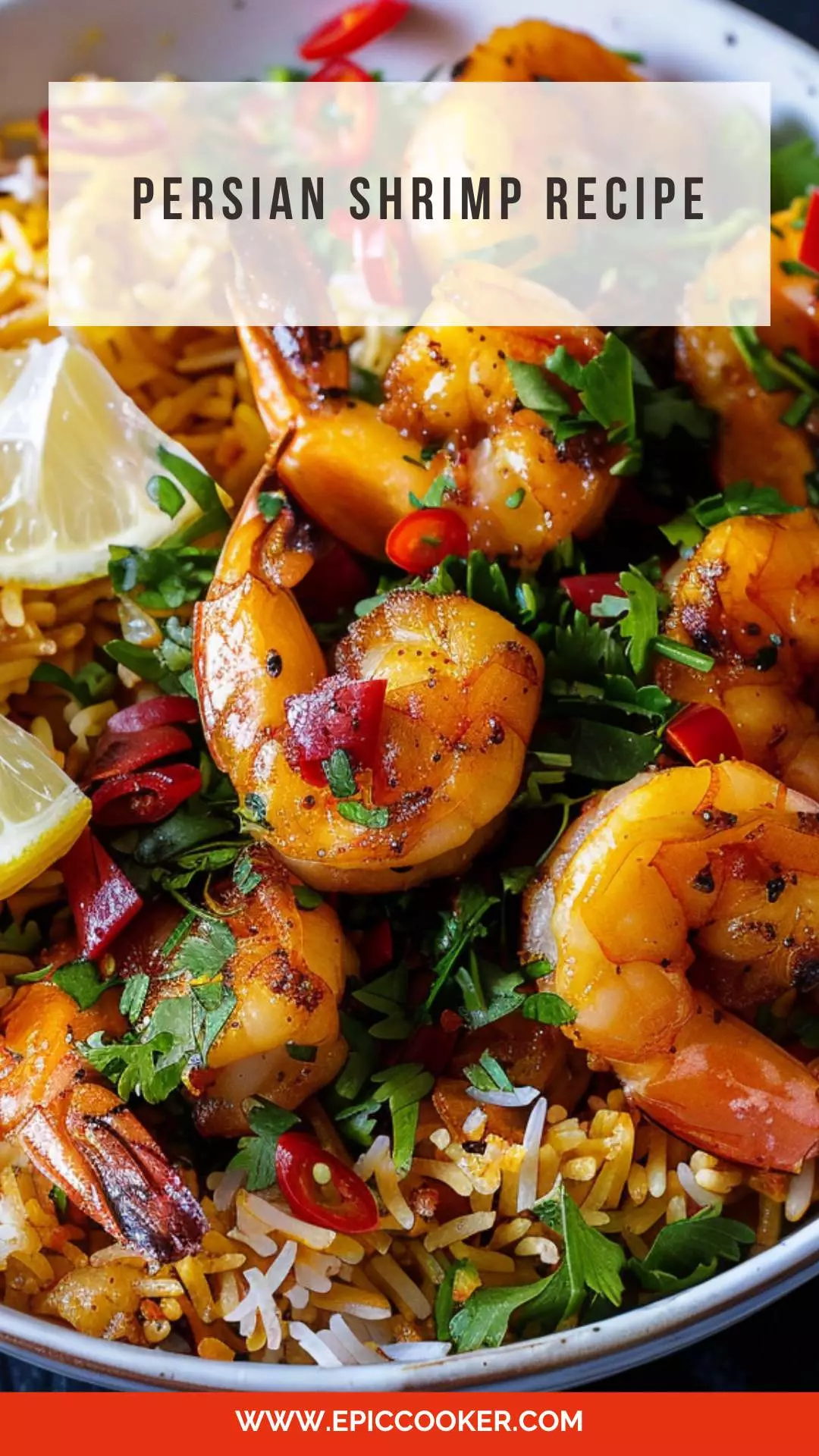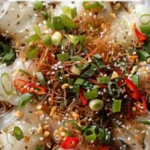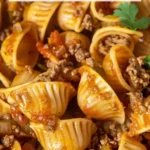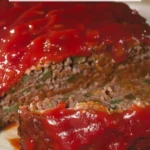The first time I tried Persian shrimp, I was captivated by the tantalizing aroma that wafted from the kitchen. The blend of saffron, garlic, and cilantro filled the air, promising a culinary adventure like no other.
As I took my first bite, I was greeted with a symphony of flavors – the delicate sweetness of the shrimp, the earthy richness of turmeric, and the subtle heat of cayenne pepper.

Why This Recipe Works?
1. Flavorful Spice Blend: The combination of turmeric, cayenne pepper, and advieh (Persian spice blend) creates a complex and aromatic base for the dish.
2. Fresh Ingredients: The use of fresh cilantro, ginger, and garlic adds brightness and depth to the flavor profile.
3. Saffron Infusion: The addition of saffron, dissolved in hot water, imparts a luxurious golden hue and a unique floral note to the dish.
4. Perfectly Cooked Shrimp: By briefly sautéing the shrimp until just cooked through, this recipe ensures that the shrimp remains tender and succulent.
How Does It Taste Like?
The flavors of Persian shrimp dance on your palate, with each ingredient playing a harmonious role in creating a culinary masterpiece. The sweetness of the shrimp is enhanced by the earthy turmeric and the subtle heat of the cayenne pepper. The saffron adds a touch of elegance, while the cilantro and garlic provide a fresh and fragrant backdrop.
You’ll also like the following Dinner recipes!
What sets this recipe apart from other Persian shrimp variations?
Unlike other Persian shrimp recipes, this one stands out for its bold use of spices and fresh ingredients. The addition of advieh, a traditional Persian spice blend, elevates the dish to new heights, while the saffron infusion adds a touch of luxury. The careful balance of flavors and textures makes this recipe a true standout among its peers.
Ingredients You’ll Need:
- Basmati Rice: Basmati rice is a fragrant, long-grain rice that serves as the base for the dish. It has a distinct aroma and delicate flavor that pairs well with the bold flavors of the shrimp and spices. When cooked properly, Basmati rice becomes fluffy and tender, providing the perfect canvas for the flavorful shrimp.
- Water: Water is used to cook the rice. It hydrates the rice grains and helps them absorb the flavors of the other ingredients. Properly measured water ensures that the rice cooks to the perfect consistency, neither too dry nor too soggy.
- Salt: Salt is added to the cooking water for the rice. It enhances the natural flavor of the rice and ensures that it is well-seasoned throughout. Proper seasoning with salt is crucial for bringing out the best taste in the rice.
- Vegetable Oil: Vegetable oil is used to sauté the onions, garlic, and spices. It adds richness and depth to the dish and helps to prevent sticking and burning. The oil also helps to distribute the flavors of the aromatics evenly throughout the dish.
- Yellow Onion, Finely Chopped: Finely chopped yellow onion adds sweetness and depth of flavor to the dish. It serves as the aromatic base for the shrimp, providing a savory foundation for the other ingredients.
- Garlic, Minced: Minced garlic adds pungent and aromatic flavor to the dish. It complements the other spices and aromatics, adding complexity to the overall taste profile of the shrimp.
- Fresh Cilantro, Chopped: Chopped cilantro adds freshness and brightness to the dish. It provides a vibrant pop of color and a subtle herbal flavor that complements the other ingredients.
- Fresh Ginger, Grated: Grated ginger adds warmth and depth of flavor to the dish. It has a slightly spicy and citrusy taste that enhances the overall taste profile of the shrimp.
- Tomato Paste: Tomato paste adds richness and depth to the dish. It provides a subtle sweetness and tanginess that balances out the spices and adds complexity to the sauce.
- Red Bell Pepper, Thinly Sliced: Thinly sliced red bell pepper adds sweetness and crunch to the dish. It provides a contrast in texture and color and adds a subtle hint of sweetness to the shrimp.
- Turmeric: Turmeric adds a vibrant yellow color and earthy flavor to the dish. It has a slightly bitter taste that complements the other spices and adds depth to the overall taste profile.
- Cayenne Pepper: Cayenne pepper adds heat and spice to the dish. It provides a subtle kick that balances out the sweetness of the other ingredients and adds complexity to the flavor profile.
- Curry Powder or Advieh (Persian Spice Blend): Curry powder or Advieh adds warmth and complexity to the dish. It typically contains a blend of spices such as coriander, cumin, cinnamon, and cardamom, which add depth of flavor and aroma to the shrimp.
- Ground Black Pepper: Ground black pepper adds a pungent and spicy flavor to the dish. It enhances the other spices and adds depth to the overall taste profile of the shrimp.
- Shrimp, Peeled and Deveined: Peeled and deveined shrimp are the star protein of the dish. They provide a sweet and succulent taste and absorb the flavors of the spices and aromatics. Properly cooked shrimp are tender and juicy, adding a luxurious texture to the dish.
- Saffron, Powdered and Dissolved in Hot Water: Saffron adds a distinct aroma, flavor, and golden color to the dish. It has a slightly floral and earthy taste that complements the other ingredients. Saffron is a luxurious ingredient that elevates the dish and adds a touch of elegance to the presentation.
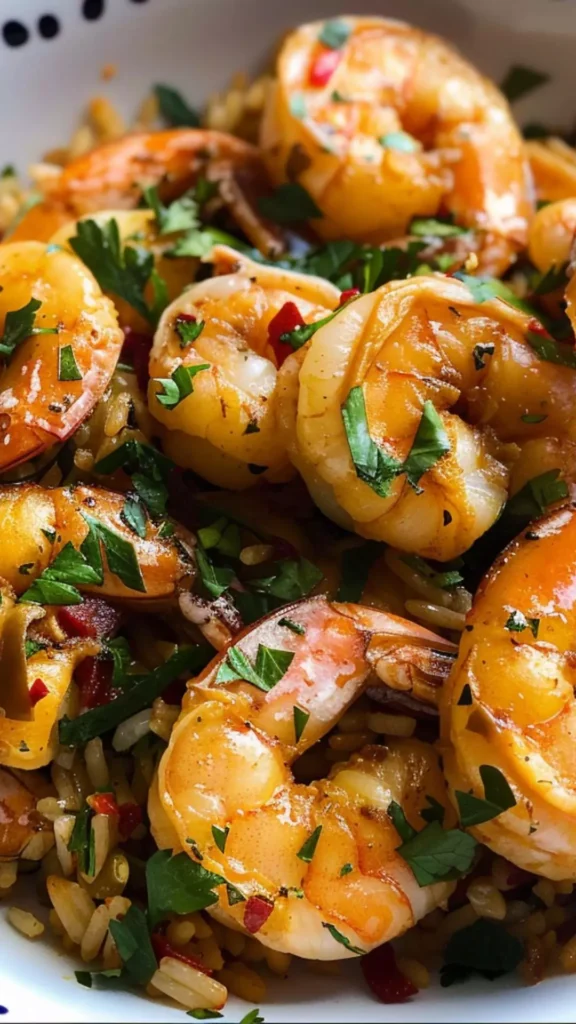
Step by Step Directions:
Step 1: Prepare the Rice
- Begin by rinsing the Basmati rice under cold water until the water runs clear. Drain it well.
- In a saucepan, combine the rinsed rice, water, 1 tablespoon of vegetable oil, and ½ tsp salt. Bring the mixture to a gentle simmer over medium heat.
- Once the rice is simmering, reduce the heat to low and cover the saucepan with a lid. Allow the rice to cook undisturbed for about 5 – 7 minutes, or until the water is almost fully absorbed.
- After the initial cooking time, remove the saucepan from the heat and let it sit, covered, for an additional 10 minutes. This allows the rice to steam and become fluffy.
- Once the resting time is complete, use a fork to fluff the rice gently, separating the grains. Set the rice aside while you prepare the shrimp.
Step 2: Cook the Shrimp Mixture
- In a large skillet or frying pan, heat the remaining tablespoon of vegetable oil over medium heat.
- Add the finely chopped yellow onions to the skillet and sauté them until they turn golden brown and caramelized.
- Stir in the minced garlic and cook for about a minute until fragrant.
- Add the chopped cilantro and grated ginger to the skillet, and sauté for an additional 2 minutes until aromatic.
- Incorporate the tomato paste, turmeric, salt, cayenne pepper, curry powder (or advieh), and ground black pepper into the onion mixture. Stir well to combine all the spices.
- Add the peeled and deveined shrimp to the skillet and cook for a few minutes until they turn pink and are fully cooked through. Be sure not to overcook the shrimp to keep them tender and juicy.
Step 3: Assemble and Serve
- To serve, arrange a layer of the cooked rice on a large serving platter.
- Spoon the cooked shrimp mixture on top of the rice, spreading it evenly across the surface.
- Repeat the layering process until all the rice and shrimp mixture are used, creating a visually appealing presentation.
- Garnish the dish with additional chopped cilantro and a drizzle of saffron-infused water for added flavor and aroma.
- Serve the Persian shrimp dish immediately while it’s still hot, and enjoy the delightful blend of spices and textures!
Notes:
– Make sure to devein the shrimp before cooking to remove any grit or impurities.
– Adjust the amount of salt and cayenne pepper according to your taste preferences.
– For a richer flavor, you can substitute chicken or vegetable broth for water when cooking the rice.
– If you prefer a spicier dish, you can increase the amount of cayenne pepper or add a pinch of red pepper flakes.
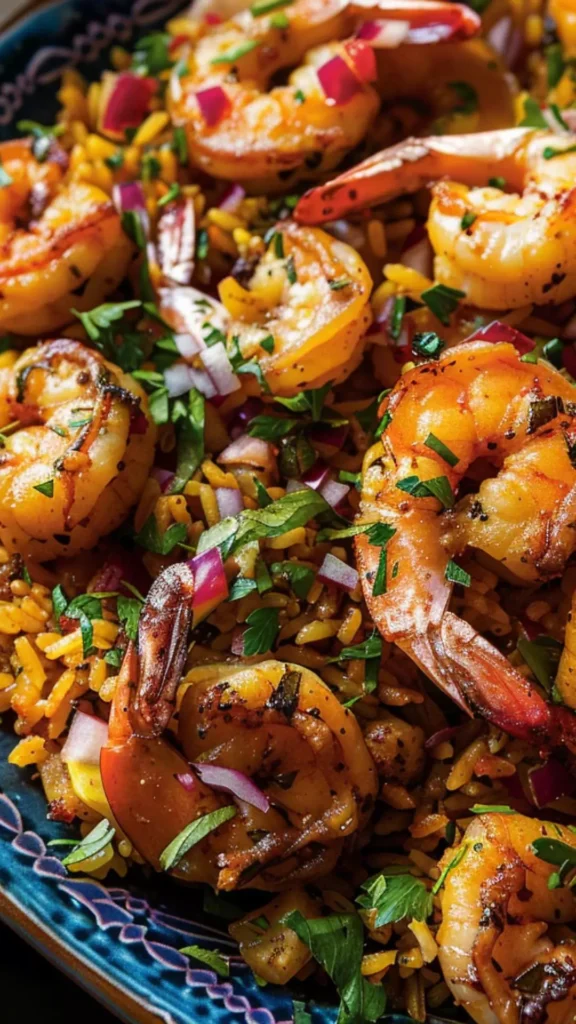
Nutrition Information:
– Serving size: 1 cup
– Calories: 320
– Total Fat: 8g
– Saturated Fat: 1g
– Cholesterol: 160mg
– Sodium: 780mg
– Total Carbohydrates: 40g
– Dietary Fiber: 2g
– Sugars: 2g
– Protein: 25g
How Do You Store This Persian Shrimp?
Store any leftovers in an airtight container in the refrigerator for up to 3 days. Reheat in the microwave or on the stovetop until heated through before serving.
Sides For Persian Shrimp:
1. Saffron Rice: The delicate flavor of saffron rice pairs perfectly with the aromatic Persian shrimp, creating a complete and satisfying meal.
2. Mast-o-Khiar (Yogurt and Cucumber Salad): The cool and creamy yogurt dressing of Mast-o-Khiar provides a refreshing contrast to the warm and spicy shrimp.
3. Shirazi Salad: This light and tangy salad made with tomatoes, cucumbers, onions, and parsley adds a burst of freshness to the rich flavors of the Persian shrimp.
What alternatives can you use for the ingredients if they are not present in your kitchen?
1. Basmati Rice: You can substitute Basmati rice with jasmine rice or long-grain white rice for a similar texture and flavor profile.
2. Advieh (Persian Spice Blend): If you don’t have advieh on hand, you can create your own blend using a mixture of ground cinnamon, cardamom, cumin, and nutmeg.
3. Fresh Cilantro: In place of fresh cilantro, you can use parsley or mint for a different herbaceous note in the dish.
4. Saffron: If saffron is not available, you can substitute it with a pinch of turmeric for color or a dash of rose water for a hint of floral aroma.
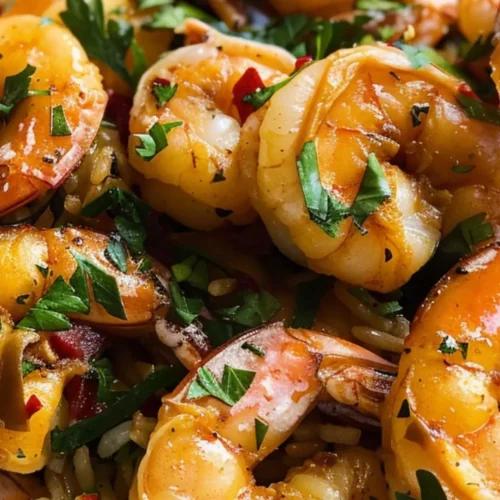
Persian Shrimp Recipe
Equipment
- Saucepan with lid
- Fork
- Large skillet or frying pan
Ingredients
- ½ red bell pepper thinly sliced
- 6 cloves garlic minced
- 1/2 tablespoon curry powder or advieh Persian spice blend
- ½ teaspoon salt more if needed
- 1 teaspoon salt
- 1 cup fresh cilantro chopped
- 1/4 teaspoon ground black pepper
- 1 teaspoon tomato paste
- 2 tablespoon vegetable oil divided
- 1 lb shrimp peeled and deveined
- 3 ½ cups water
- 1/6 teaspoon saffron powdered and dissolved in 1 tablespoon hot water
- 1 inch fresh ginger grated
- 1/2 cup cilantro chopped
- ¼ teaspoon cayenne pepper
- ½ teaspoon turmeric
- 2 yellow onion finely chopped
- 2 cups Basmati rice
Instructions
- Begin by rinsing the Basmati rice under cold water until the water runs clear. Drain it well.
- In a saucepan, combine the rinsed rice, water, 1 tablespoon of vegetable oil, and ½ tsp salt. Bring the mixture to a gentle simmer over medium heat.
- Once the rice is simmering, reduce the heat to low and cover the saucepan with a lid. Allow the rice to cook undisturbed for about 5 – 7 minutes, or until the water is almost fully absorbed.
- After the initial cooking time, remove the saucepan from the heat and let it sit, covered, for an additional 10 minutes. This allows the rice to steam and become fluffy.
- Once the resting time is complete, use a fork to fluff the rice gently, separating the grains. Set the rice aside while you prepare the shrimp.
- In a large skillet or frying pan, heat the remaining tablespoon of vegetable oil over medium heat.
- Add the finely chopped yellow onions to the skillet and sauté them until they turn golden brown and caramelized.
- Stir in the minced garlic and cook for about a minute until fragrant.
- Add the chopped cilantro and grated ginger to the skillet, and sauté for an additional 2 minutes until aromatic.
- Incorporate the tomato paste, turmeric, salt, cayenne pepper, curry powder (or advieh), and ground black pepper into the onion mixture. Stir well to combine all the spices.
- Add the peeled and deveined shrimp to the skillet and cook for a few minutes until they turn pink and are fully cooked through. Be sure not to overcook the shrimp to keep them tender and juicy.
- To serve, arrange a layer of the cooked rice on a large serving platter.
- Spoon the cooked shrimp mixture on top of the rice, spreading it evenly across the surface.
- Repeat the layering process until all the rice and shrimp mixture are used, creating a visually appealing presentation.
- Garnish the dish with additional chopped cilantro and a drizzle of saffron-infused water for added flavor and aroma.
- Serve the Persian shrimp dish immediately while it’s still hot, and enjoy the delightful blend of spices and textures!
Notes
- Make sure to devein the shrimp before cooking to remove any grit or impurities.
- Adjust the amount of salt and cayenne pepper according to your taste preferences.
- For a richer flavor, you can substitute chicken or vegetable broth for water when cooking the rice.
- If you prefer a spicier dish, you can increase the amount of cayenne pepper or add a pinch of red pepper flakes.
Nutrition
Frequently Asked Questions:
Q1. Can I use frozen shrimp for this recipe?
Yes, you can use frozen shrimp for this recipe. Make sure to thaw them completely and pat them dry before cooking to prevent excess moisture.
Q2. Is there a vegetarian version of this dish?
To make a vegetarian version, you can substitute the shrimp with firm tofu or a medley of roasted vegetables like bell peppers, zucchini, and eggplant.
Q3. Can I double the recipe for a larger crowd?
Yes, you can easily double or triple the ingredients to serve a larger group. Just make sure to adjust the cooking times accordingly and use a larger pot or skillet.
Q4. Can I make this dish ahead of time?
While this dish is best enjoyed fresh, you can prepare the components ahead of time and assemble them just before serving to maintain the best texture and flavor.
Conclusion
In conclusion, Persian shrimp is a culinary delight that marries the sophistication of Persian cuisine with the simplicity of a home-cooked meal.
From the aromatic blend of spices to the succulent shrimp and fragrant saffron, every bite tells a story of tradition and innovation. Whether you’re a seafood enthusiast or a spice aficionado, this dish is sure to captivate your taste buds and transport you to the vibrant streets of Iran.
Try this recipe today and experience the magic of Persian flavors in the comfort of your own kitchen.

